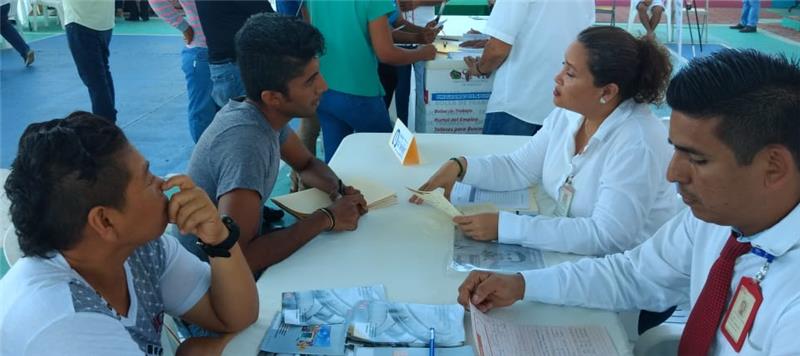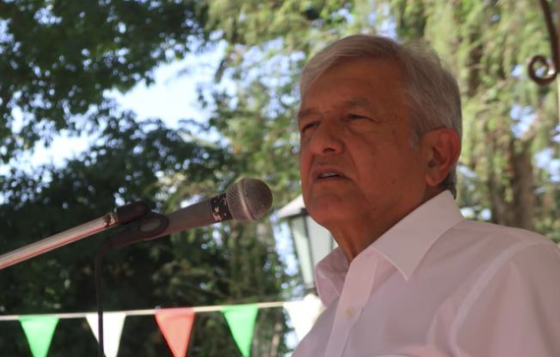
Will Colombia’s New President Deliver on His Promises?
Iván Duque, a conservative former senator, on Sunday won Colombia’s presidential runoff election. What does it mean for the country?
A Daily Publication of The Dialogue
The Covid-19 pandemic hit Latin American and Caribbean economies harder than most other regions of the world, with the International Monetary Fund projecting an 8.1 percent regional GDP contraction this year. Currencies also took a hit, with the Brazilian real falling more than 40 percent and talks of devaluation resurging in Argentina, though the Mexican peso gained traction following a record low in March. What is the outlook next year for the region’s main economic indicators, such as GDP and inflation? What trends are likely to be observed in terms of currencies? Which countries will struggle with economic recovery the most next year, and which will bounce back quicker—and why?
Alicia Bárcena, executive secretary of the United Nations Commission for Latin America and the Caribbean (ECLAC): “After falling by an estimated 7.7 percent in 2020—the sharpest contraction in the past 120 years—Latin America and the Caribbean’s GDP is forecast to rebound in 2021, growing by 3.7 percent on average. At the subregional level, South America is forecast to grow by 3.7 percent, Central America and Mexico by 3.8 percent and the Caribbean countries by 4.2 percent. The 2021 growth rate is mostly the result of a statistical rebound or carryover effect and will not be enough to regain the GDP levels lost in 2020. Before the pandemic hit, the region showed a very poor growth track in the last decade—1.8 percent on average from 2010-2019 and 0.3 percent from 2014-2019. If after the rebound in 2021 the region regains its average annual growth of 1.8 percent, the pre-pandemic level of GDP would be achieved by 2024. At the average rate of the las six years (2014-2019), it will take more than a decade. The negative social economic and productive effects in terms of unemployment, poverty, inequality and losses in productive capacity and human capital will take years to overcome. Hence, expansive macroeconomic policies have a crucial role to play in enabling the region not only to mitigate the economic and social costs of the pandemic, but also to improve on its recent growth performance, following the expected rebound in 2021. Without these active measures, a return to pre-crisis levels of economic activity is likely to take several years.”
Alfredo Coutiño, director for Latin America at Moody’s Analytics: “Latin America left the recession behind. The recovery began in the third quarter, driven by domestic reactivation and recovery of external demand. The region did not escape a contraction in 2020, around 7 percent (excluding Venezuela), but is on track to post a rebound in 2021. The region’s economy was hit hard by the Covid-19 pandemic from the end of the first quarter and through the second quarter. Prospects for 2021 remain positive given the improvement in business climate stimulated by the rollout of a vaccine during the first half of the year. This will reduce uncertainty and enhance confidence, particularly stimulating investment decisions. External demand will strengthen with the United States’ and China’s recoveries fueling demand for commodities and boosting Latin America’s exports of manufacturing inputs. The region should be able to reach a growth rate of around 4.5 percent in 2021, which includes the statistical effect generated by the low comparison base in 2020. Inflation rates will stay below or around targets, given that economies will still perform at below capacity. Currencies will return to more stable conditions due to improvement in confidence generated by the vaccine and the advance in the recovery. South America will lead the recovery, with Peru, Chile and Colombia reporting the highest growth rates, followed by Brazil. Mexico and some Central American countries will advance at more moderate rates due to reduced policy space and consequent limited support from governments. Given the capacity destruction caused by the pandemic, in terms of physical and human capital, it will take at least two years for the region to recover its pre-pandemic levels of production. The region is not exempt from a potential proliferation of populist policies that inhibit private investment, and from the resurgence of virulent social discontent.”
Claudio M. Loser, president of Centennial Group Latin America and former head of the Western Hemisphere department at the International Monetary Fund: “The collapse of output observed in 2020—8.1 percent—is the worst recorded in the last 40 years, which includes the so-called ‘lost decade’ of Latin America. Just for reference, during the worst year (1983) of that decade, GDP declined by 2.8 percent; in 2009, it declined by 2 percent. This year’s decline follows a decade of subpar performance relative to the world. Even so, there has been a rebound so far this year, and GDP is expected to increase by 3.6 percent next year, and then by some 3 percent in 2022, according to the IMF. Estimates may differ among institutions, but the bottom line is that the region’s GDP will not fully recover before 2023-24, in terms of total output, and a year or two later, on a per-capita basis. Of course, this will be the case for many other countries, although this is little consolation. The recovery will be complex, to account for the heavy human toll and the financial burden, which will need to be tackled eventually. Beyond Venezuela and Argentina, inflation is not an issue. For Argentina, prices may increase by between 40 percent and 50 percent. For the rest of the region, inflation may be about 3 percent, above that of advanced economies but well under control. The region has been resilient, but countries such as Argentina, Brazil, Ecuador, Mexico and Peru will have a slower recovery, mostly on account of generally weak policies and complex politics. As to exchange rates, projecting them would not be more than a guess.”
Joydeep Mukherji, managing director of sovereign ratings at Standard & Poor’s in New York: “The region will recover slowly in 2021, but most countries are not likely to regain their 2019 GDP until the second half of 2022. Peru, Chile and Colombia are likely to recover faster than most countries, but Mexico may recover slower than the region on average. Poor relations between the government and the domestic private sector had contributed to a mild recession in 2019 in Mexico, prior to the pandemic. Many countries entered the recession with weak public finances and lower investment and economic growth than emerging markets as a whole. The negative impact of the pandemic and lockdowns has led us to downgrade or place a negative outlook on two-thirds of sovereign ratings in the region, more than in other regions of the world. The poor performance reflects economic and political weaknesses that existed before the pandemic, as well as worsening external conditions. The common challenge facing the region is to recover from the pandemic and restore economic growth while managing weaker public finances. Government debt will increase this year by more than 10 percentage points of GDP in many countries (including Brazil, Colombia, Peru, Chile and Costa Rica). A weak economic recovery threatens to increase poverty, exacerbate income inequality (already higher than in other regions), reinforce anger at corruption and sharpen existing political and social divisions. That, in turn, may worsen distrust of the political class, exacerbate political fragmentation and make it harder for leaders to reach agreements on key economic policies, potentially worsening sovereign credit ratings.”
Vangie Bhagoo-Ramrattan, head of the economics research unit at First Citizens in Port-of- Spain, Trinidad and Tobago: “The sudden onset of the global pandemic, with almost all countries implementing travel restrictions, closure of nonessential businesses and social-distancing measures, certainly has had a significant negative impact on the Caribbean region, which is primarily dependent on travel and tourism. Foreign exchange earnings and government revenue have been significantly eroded, while the labor market has deteriorated sharply. In its October World Economic Update, the IMF downgraded its 2020 regional forecast for GDP growth, now much steeper than initially anticipated and a deterioration relative to April’s forecasts. The region’s tourism-dependent economies are projected to contract by an average of 9 percent in 2020, well below the average contraction of 3.3 percent for emerging markets globally. Faced with already strained fiscal flexibility, governments have been forced to ramp up pandemic-related expenditure, amid dwindling revenue with the growing funding needs financed largely through multilateral institutions. Prior to March, many of the countries in the region were on course to sustainably reducing indebtedness through rigid consolidation programs, including in Barbados, Jamaica and Grenada. Due to the shock of 2020, the process of fiscal and debt sustainability will certainly be prolonged. While the IMF projects an uptick in overall GDP growth in 2021 for the region, we are a bit more cautious. Even with the rollout of the vaccine, regaining economic momentum will prove to be difficult, especially as tourism and travel may take some time to fully recover. The impact on the labor market may likely linger due to the deep contraction of 2020 and the permanent impact it may have had on some businesses. This will likely hinder any uptick in private consumption. Overall, 2021 is anticipated to be another challenging year for the region as countries try to recover from a devastating 2020.”
Dorotea López Giral, director of the International Studies Institute at the University of Chile: “The pandemic has exacerbated and accelerated trends that Latin America had already been experiencing. This time, the uncertainty is greater than during any other crisis, and we have to look at the projections in that context. Projections for 2021 will be statistically affected by the 2020 decline, which is the worst contraction in more than a century. In 2021, our region is expected to grow, with significant variance among countries. ECLAC has estimated a growth of 3.7 percent. It will not be until 2024 that the growth dynamics prior to the crisis will be achieved. On the one hand, the increase in public spending through fiscal packages will allow a low recovery in growth and greater liquidity that can have an impact on inflation (though 2020 inflation rates were low, except for Venezuela and Argentina). On the other hand, among the factors that have influenced lower inflation rates are the drop in aggregate demand and lower energy prices. As long as this persists and the pandemic is not controlled, monetary authorities will have room to adopt expansionary monetary policies during 2021 that will allow economies to be reactivated. Likewise, the trajectory and potential volatility of the exchange rate for 2021 will depend on the evolution of and control over the health crisis. The exchange rate forecasts for 2021, with some exceptions, aim to remain at the average levels reached during 2020. Recovery is undoubtedly first related to the vaccine and its success. At the country level, it depends on the ability to maintain fiscal and monetary policies, as well as social stability, which has been a problem in several countries. The relationship between China and the United States, and what the region achieves in its own integration processes and cooperation, will also be decisive.”
 The Latin America Advisor features Q&A from leaders in politics, economics, and finance every business day. It is available to members of the Dialogue’s Corporate Program and others by subscription.
The Latin America Advisor features Q&A from leaders in politics, economics, and finance every business day. It is available to members of the Dialogue’s Corporate Program and others by subscription.
Iván Duque, a conservative former senator, on Sunday won Colombia’s presidential runoff election. What does it mean for the country?
Mexicans go to the polls on Sunday, July 1, for the country’s presidential, legislative and local elections. What can we expect?
Leftist Andrés Manuel López Obrador swept to victory Sunday in Mexico. What changes are in store?
 A job fair in Mexico’s
Guerrero state. // File Photo: Guerrero state.
A job fair in Mexico’s
Guerrero state. // File Photo: Guerrero state.

